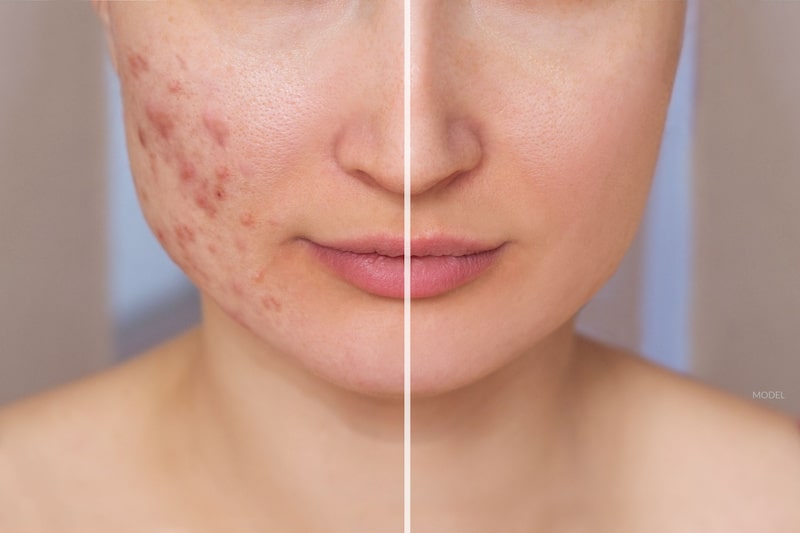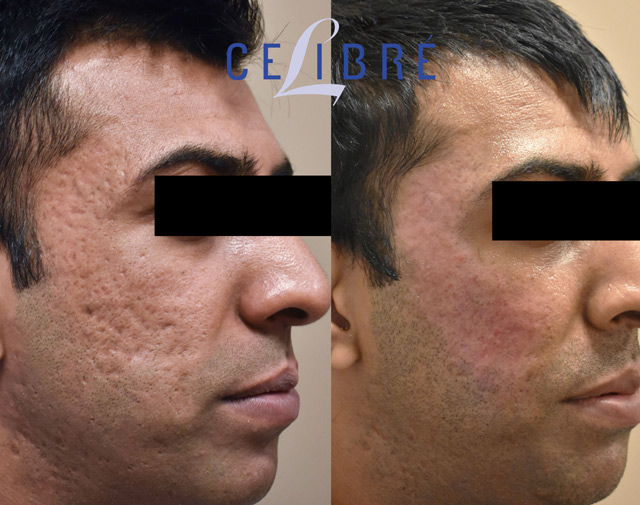Reliable Acne and Acne Scars Treatment: Clear Skin Solutions That Job
Reliable Acne and Acne Scars Treatment: Clear Skin Solutions That Job
Blog Article
Recognizing the Various Skin Disease and Efficient Treatment Choices for Acne Marks
Acne scars stand for a complicated interplay of skin problems that dramatically effect individuals' self-worth and total skin wellness. As we discover the landscape of acne mark administration, it ends up being evident that the trip toward more clear skin may entail more than simply topical options.
Sorts Of Acne Marks
Acne scars can show up in different kinds, each needing specific therapy approaches. The 2 main groups of acne scars are hypertrophic and atrophic scars. Atrophic marks are characterized by a loss of cells, resulting in clinically depressed areas on the skin. These marks are further identified into 3 subtypes: ice choice scars, which are deep and slim; boxcar scars, which are bigger and have well-defined sides; and rolling marks, which produce a wave-like look due to unequal skin appearance.
On the other hand, hypertrophic marks arise from an overproduction of collagen during the recovery procedure, causing elevated areas on the skin. These scars are commonly firm and can vary in color, often showing up red or darker than the bordering skin.

Reasons of Acne Scarring
Marking occurs as a result of the body's all-natural recovery reaction to inflammation and injury brought on by acne sores. When acne types, it sets off an inflammatory reaction, leading to the launch of different cytokines and growth factors that advertise healing. This process can occasionally lead to too much cells formation or poor repair work, resulting in marks.
The main sources of acne scarring consist of the severity of the acne itself, period of the lesions, and specific skin types. Extreme inflammatory acne, such as cysts and nodules, is most likely to result in scarring due to much deeper tissue damage. In addition, inappropriate handling of acne lesions, such as selecting or pressing, can worsen tissue injury and inflammation, boosting the likelihood of scarring.
Hereditary predisposition likewise plays a significant function; people with a family background of scarring go to a higher danger. Skin kind and color can influence mark development, as darker skin tones may experience post-inflammatory hyperpigmentation, while lighter skin may create atrophic marks.

Therapy Alternatives for Scarring
Reliable therapy options for acne scarring vary depending upon the type and seriousness of the scars. Normally classified into atrophic, hypertrophic, and keloid scars, these conditions need tailored methods for optimum results.
For atrophic scars, which are defined by a loss of tissue, treatments such as chemical peels, microdermabrasion, and laser therapy are commonly employed. These methods advertise skin revival and promote collagen manufacturing, consequently enhancing skin structure. Subcision, a minimally invasive procedure, can additionally be reliable by separating coarse bands below the skin.
Hypertrophic and keloid scars can be extra testing to treat. Options include corticosteroid shots this content to lower swelling and squash the marks. acne scars. Sometimes, cryotherapy or laser therapy might be recommended to minimize their look
Surgical choices are available for extreme scarring, where excision or skin grafting may be required. It's important for check here people to speak with a skin specialist to assess their details scar kind and go over the most ideal therapy plan. Incorporating several treatments commonly yields the most effective results, ensuring that each individual's distinct skin problem is attended to effectively.
Home Remedies and All-natural Solutions
All-natural options and natural home remedy can give an obtainable method for people seeking to enhance the look of acne scars. Numerous components discovered in the home cooking area have shown prospective advantages in improving skin appearance and promoting recovery.
One preferred remedy is aloe vera, recognized for its relaxing and anti-inflammatory residential or commercial properties. Applying fresh aloe vera gel directly onto the marks can help improve skin hydration and reduce soreness. Similarly, honey has natural antibacterial and moisturizing top qualities that can assist in mark recovery. It can be used as a mask, left on for half an hour prior to washing off.
An additional reliable alternative is lemon juice, which works as an all-natural exfoliant and can lighten hyperpigmentation. It ought to be utilized carefully, as it might trigger photosensitivity. Oatmeal masks are likewise useful; their gentle exfoliation can help remove dead skin cells while soothing irritation.
Important oils, such as tea tree oil and lavender oil, can additionally support scar healing as a result of their antimicrobial homes. It is important to carry out a patch examination prior to applying any remedy to make certain there are no damaging reactions. These natural remedies can be a complementary strategy in the journey to decrease acne scars.
Protecting Against Future Scarring
Taking on a positive approach to skin care can substantially minimize the danger of establishing future acne marks. Among the essential strategies is click here to read to take care of acne successfully as it arises (acne scars). This entails using non-comedogenic skin care products and drugs suggested by skin specialists that target acne without irritating the skin. Normal cleansing, peeling, and hydration can help keep skin health and protect against blocked pores.
Additionally, preventing the lure to pick or squeeze acne lesions is vital, as this can lead to swelling and succeeding scarring. Instead, individuals must concentrate on applying topical treatments that advertise recovery and decrease swelling. Active ingredients such as salicylic acid, benzoyl peroxide, and retinoids are known for their effectiveness in taking care of acne and minimizing scars.

Lastly, preserving a healthy and balanced diet abundant in anti-oxidants and staying hydrated supports skin regrowth. By applying these preventive procedures, individuals can significantly lower their danger of future scarring and advertise total skin wellness.
Conclusion
To conclude, a thorough understanding of acne marks, encompassing both atrophic and hypertrophic types, is necessary for reliable therapy methods. Customized treatments, including specialist therapies and natural remedy, can significantly boost skin appearance and texture. Safety nets also play a crucial duty in reducing future scarring. Consultation with a dermatologist stays essential to create personalized approaches that take into consideration private skin types and mark seriousness, inevitably enhancing the efficacy of scar monitoring methods.
Acne marks represent an intricate interaction of skin conditions that dramatically effect people' self-confidence and overall skin wellness. The two key classifications of acne scars are hypertrophic and atrophic scars. These marks are further identified into 3 subtypes: ice pick marks, which are slim and deep; boxcar marks, which are broader and have well-defined edges; and rolling marks, which produce a wave-like look due to uneven skin appearance.
An extensive consultation with a skin doctor can help determine the most proper intervention, taking right into account the person's skin type, mark extent, and general skin wellness.
Consultation with a skin doctor remains necessary to develop individualized approaches that think about specific skin types and scar intensity, inevitably enhancing the effectiveness of mark management techniques.
Report this page